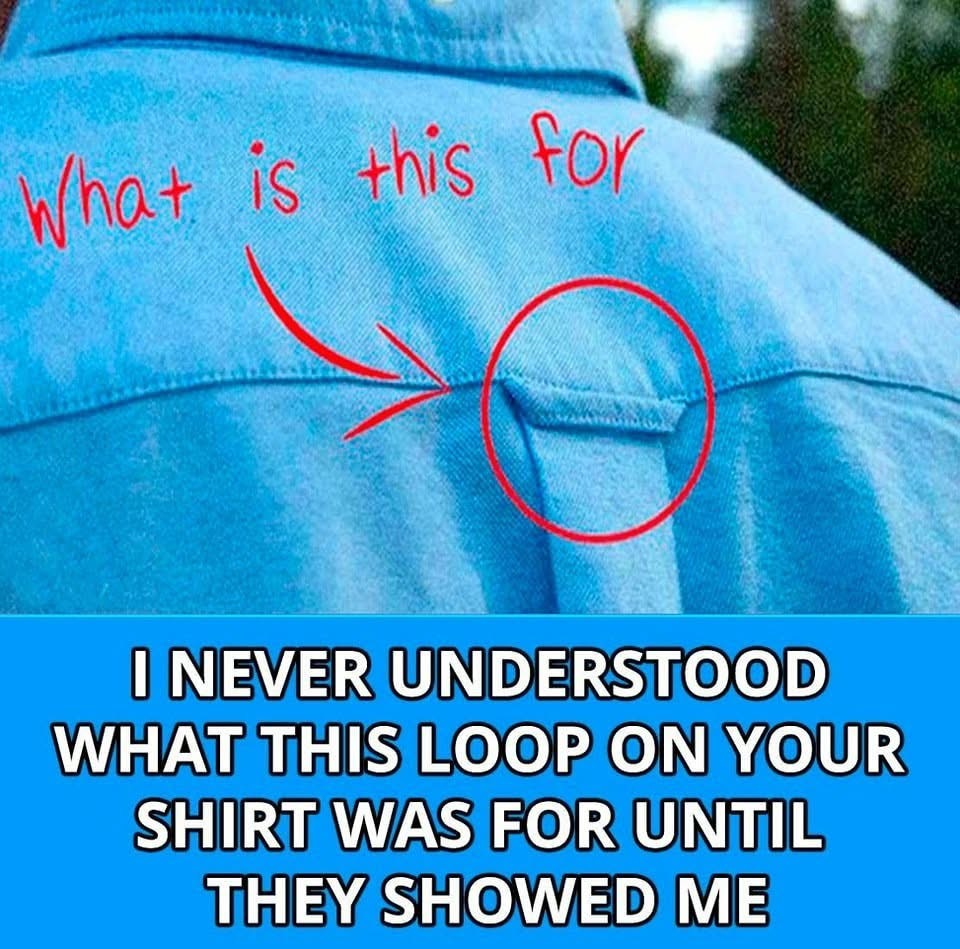Why Do Button Down Shirts Have Loops on the Back The Surprising History of the Locker Loop

You’ve worn button-down shirts for years — maybe even every day — but have you ever noticed that small fabric loop stitched at the back, just below the collar ?
It’s not a flaw. It’s not a leftover from manufacturing.
This tiny detail — commonly known as the “locker loop” — has a rich, practical, and surprisingly stylish history that spans naval decks, Ivy League campuses, and modern fashion runways .
So what is it for? And why is it still on shirts today?
Let’s unravel the mystery behind the back loop on button-down shirts — and why this small feature says a lot about tradition, function, and subtle style.
What Is the Locker Loop?
The locker loop (also called a hanger loop , sweater loop , or backstay ) is a small strip of fabric sewn vertically between the shoulders on the inside of a dress or casual shirt.
While it’s most commonly found on Oxford cloth button-downs (OCBDs) , it also appears on some polos, blazers, and even women’s shirts.
At first glance, it seems pointless — but its origins are deeply rooted in practicality and prestige .
The Naval Origins: A Sailor’s Best Friend
The locker loop’s story begins in the British Royal Navy in the early 20th century.
Sailors needed a way to hang their shirts quickly and securely in tight, damp quarters — especially during rough seas.
Instead of using fragile hangers that could break or fall, they used the back loop to:
Hang shirts from hooks in lockers or cabins
Keep uniforms neat and wrinkle-free
Prevent shirts from blowing overboard in strong winds
This simple feature saved time, space, and sanity — and soon became standard on naval uniforms.
The Ivy League Takeover: From Function to Fashion
In the 1950s and 60s, American prep culture adopted the British-style button-down collar shirt — and with it, the locker loop .
Colleges like Yale, Harvard, and Princeton became hotbeds of Ivy League style , where the OCBD was a symbol of refinement, tradition, and understated cool .
The locker loop, once a utilitarian naval feature, became a subtle badge of authenticity — a sign that your shirt was the “real deal,” not a cheap imitation.
Fun fact: Many Ivy League students would hang their shirts on bedposts or hooks in dorm rooms — just like sailors did.
Modern Uses: Why the Loop Still Exists Today
While most of us aren’t sailing ships or living in dorms, the locker loop has survived into modern fashion — and people have found creative new uses for it.
- Hanging the Shirt Properly